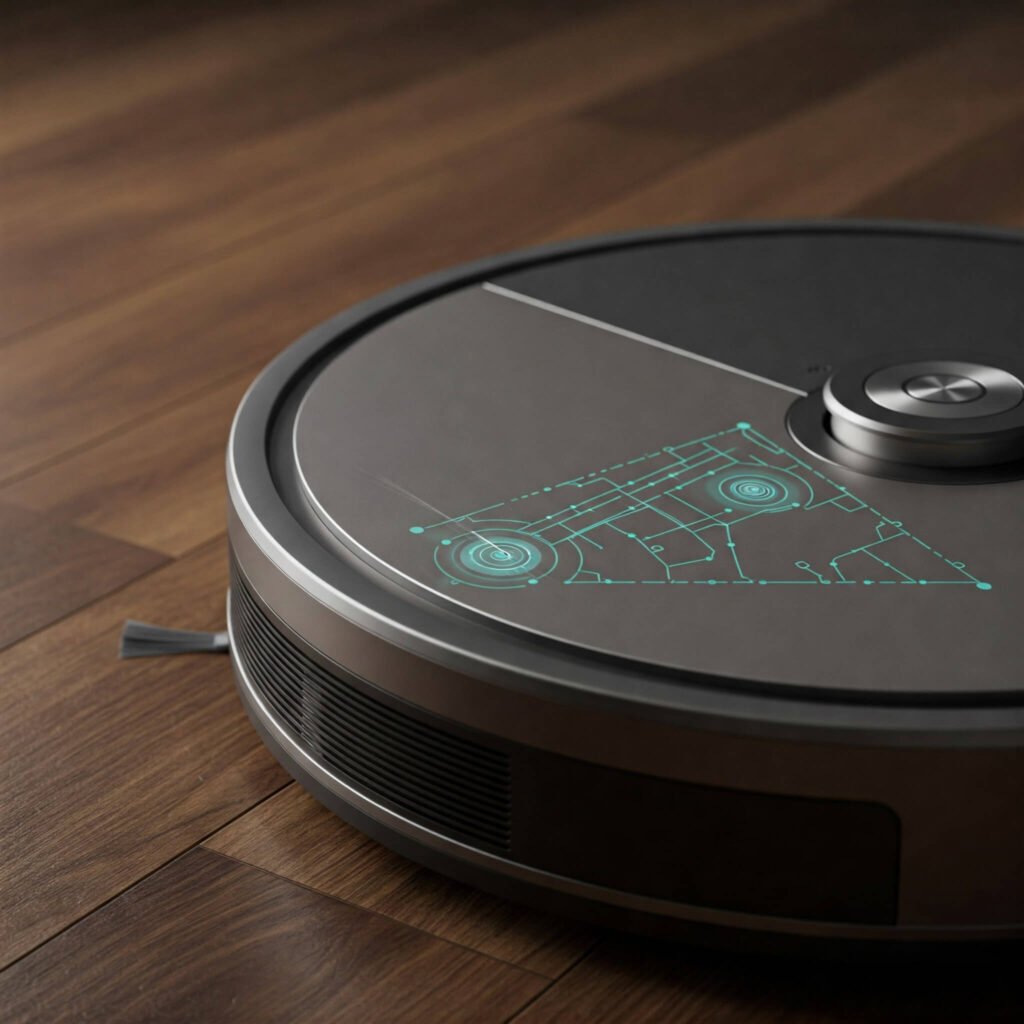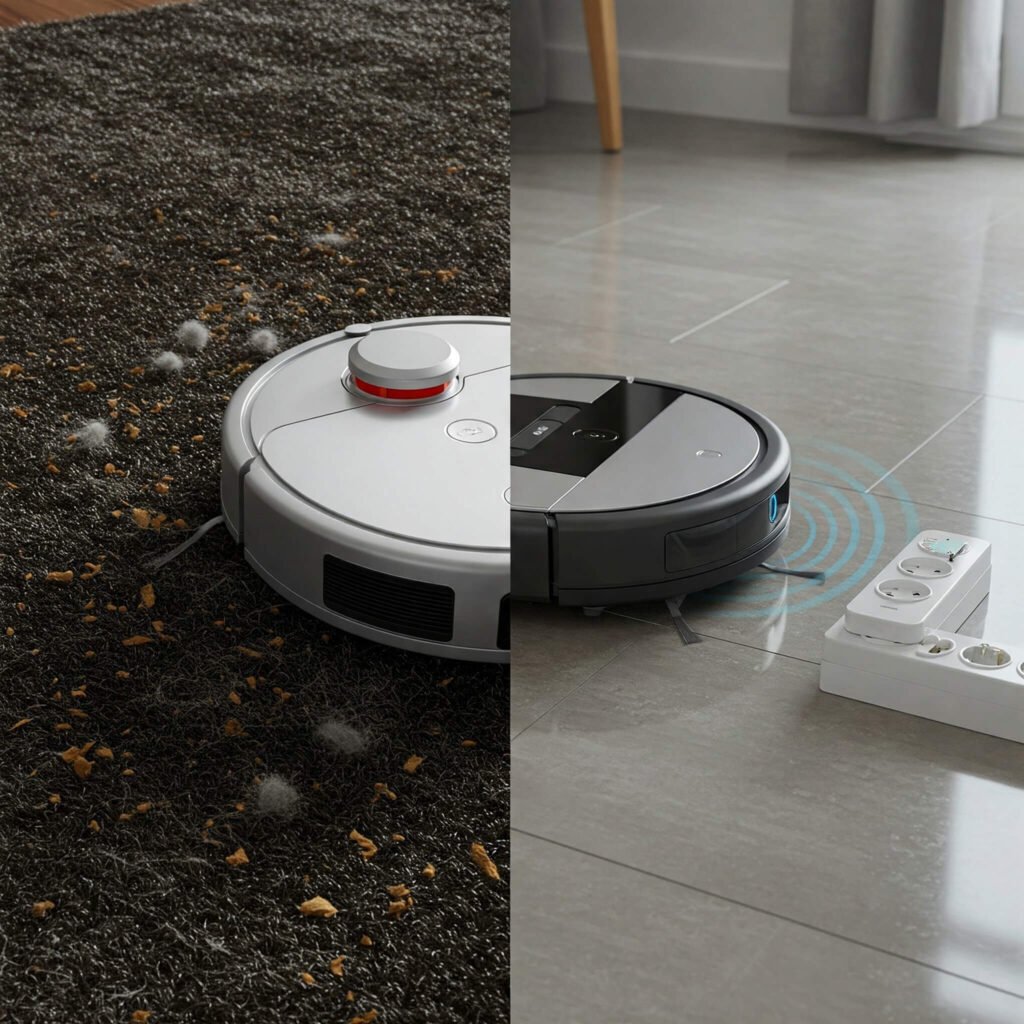Let’s be honest. Finding time and energy for household chores can feel like a luxury in our increasingly busy lives. Scrubbing floors? Wrestling with upright vacuums? It’s time-consuming, back-breaking work. But what if cleaning your floors could happen almost magically? Imagine it happening while you’re at work. Picture it while you’re out with friends, or simply relaxing on the couch. This isn’t just a futuristic dream anymore. In fact, it’s becoming the everyday reality. And it’s precisely why robot vacuums are the future of home cleaning.
Gone are the days of clumsy robots bumping randomly into furniture. Today’s robot vacuums are sophisticated machines. They are powered by advanced AI, precise navigation, and powerful suction. These devices are transforming how we maintain our living spaces. They offer convenience, efficiency, and a level of autonomy that manual cleaning simply cannot match. Consequently, they are becoming an indispensable part of the modern smart home. As technology accelerates, the capabilities of these devices are only set to grow. Therefore, let’s dive into why robot vacuums are the future. We’ll also look at what cutting-edge features to expect, influencing our potential 2025 top picks.
Why Robot Vacuums Are the Future: The Shifting Landscape of Home Cleaning
Our lifestyles have significantly evolved. More people are working from home. Many are juggling family life. They are seeking ways to reclaim precious free time. Manual cleaning, while effective, demands a significant time investment. This is precisely where automated solutions step in. They are fundamentally changing our approach to keeping floors tidy.
- Time is the New Currency: Perhaps the most compelling reason why robot vacuums are the future is the unparalleled time-saving they offer. You can schedule them to clean daily. Effectively, you outsource a significant chore.
- The Rise of the Smart Home: Robot vacuums integrate seamlessly into smart home ecosystems. You can control them via apps, voice assistants, and automation routines. In essence, they are becoming just another connected appliance. They are expected to work harmoniously within your home’s tech framework.
- Technological Maturity: Early robot vacuums were novelty items. Today, improvements in battery life, suction power, navigation algorithms (like Lidar and VSLAM), and object recognition have made them genuinely effective cleaning tools. They handle a variety of floor types and layouts with ease.
Key Technologies Driving Why Robot Vacuums Are the Future
Rapid advancements in several key areas are making the “future” aspect of robot vacuums so compelling. These aren’t minor tweaks. Instead, they are foundational changes. They significantly enhance performance and autonomy.
- Advanced Navigation and Mapping: Forget random bouncing. Modern robots use laser mapping (Lidar) or camera-based systems (VSLAM). They create accurate maps of your home. As a result, this allows for efficient cleaning paths, room-specific cleaning, virtual boundaries, and “no-go” zones. This intelligent navigation is core to why robot vacuums are the future.
- Improved Suction Power and Floor Type Detection: Today’s robots boast significantly stronger suction. They are capable of picking up fine dust, pet hair, and larger debris. They work well on both hard floors and carpets. Many can automatically adjust suction power when moving between different surfaces, too.
- AI and Object Recognition: This represents a major leap forward. It is crucial for understanding why robot vacuums are the future in complex environments. AI helps robots identify and avoid common floor hazards. Think charging cables, socks, or pet waste. This prevents frustrating stuck situations. [Link to Tech Review Site Discussing Robot Vacuum AI]
- Self-Emptying Stations and Auto-Mop Washing: The convenience factor is multiplied significantly here. Base stations automatically empty the robot’s dustbin. They often store weeks of debris. Alternatively, they can clean and refill the mop’s water tank. Some even wash and dry the mop pad. This drastically reduces user intervention. [Link to Manufacturer Website on Self-Emptying Technology]
- Smarter App Control and Automation: Mobile apps offer granular control. You can schedule cleans. You can select specific rooms. Adjusting settings is easy. You can also view cleaning maps and receive notifications. Furthermore, integration with voice assistants like Alexa and Google Assistant adds hands-free convenience. This further solidifies why robot vacuums are the future of effortless cleaning.

Why Robot Vacuums Are the Future: Our 2025 Top Picks (Based on Trends)
Predicting exact model names for 2025 is tough. However, we can confidently forecast the types of robot vacuums that will likely lead the pack. This forecast is based on the technological trajectory we’re seeing today. The top contenders in 2025 will be those that best implement the advanced features discussed above. They will offer a truly autonomous and effective cleaning experience.
Here’s what to look for. These features influence our ‘picks’ in the context of why robot vacuums are the future:
- The All-Rounder Innovators: Brands like iRobot, Roborock, and Ecovacs are likely to continue pushing boundaries. Expect enhanced AI obstacle avoidance. Look for more sophisticated mapping and longer battery life. Furthermore, expect even better self-maintenance features. Deeper smart home integration will also be key. These will embody why robot vacuums are the future for comprehensive cleaning.
- Look for: Advanced AI object recognition, multi-floor mapping, intelligent mop lifting on carpets, full auto-empty/mop-wash stations.
- The Budget-Friendly Performers: Companies like Anker (Eufy) and Shark will focus on accessibility. They will bring premium features like Lidar navigation and basic self-emptying to more accessible price points. This makes the future of cleaning attainable for more households.
- Look for: Reliable Lidar navigation, decent suction power, basic app control, entry-level self-empty options.
- The Hardwood and Pet Hair Masters: Expect specialized models here. They will feature tangle-resistant brushes and powerful suction. They’ll be optimized for picking up pet dander and debris from hard surfaces. This is crucial for many homes. Their effectiveness on these common challenges underscores why robot vacuums are the future for pet owners and those with hard floors.
- Look for: High Pascal suction ratings, multi-surface brushes, advanced filtration.
- The Mopping Mavericks: Combo vacuum/mop robots will become even more adept. They will have features like pressurized scrubbing. Intelligent mop lifting will prevent wetting carpets. Effective self-cleaning of mop pads will also be standard.
- Look for: Vibrating or rotating mop pads, automatic mop lifting, large water tanks or auto-refill stations.

What Makes These 2025 Picks Reflect the Future?
The common thread among the leading robot vacuums in 2025 will be their intelligence and independence. They won’t just clean your floors. Importantly, they will understand their environment better. They will require less manual intervention. Furthermore, they will integrate more seamlessly into your life. Their ability to handle complex layouts is key. They can avoid common pitfalls. They also manage their own maintenance tasks. Think emptying dustbins or cleaning mop pads. This truly demonstrates why robot vacuums are the future of autonomous home care.
Are Robot Vacuums Worth the Investment for Your Future Home?
Considering why robot vacuums are the future, the investment argument becomes stronger than ever. While the initial cost can be higher than a traditional vacuum, the value comes from two things: reclaimed time and consistent cleanliness.
- Unmatched Convenience: Imagine this: coming home to consistently clean floors every day. And you didn’t lift a finger!
- Improved Air Quality: Effective filtration systems are present in modern robots. They trap allergens and dust. As a result, they contribute to a healthier home environment.
- Consistent Maintenance: Regular, automated cleaning prevents the build-up of dirt and dust. This makes deeper cleans less frequent. It also makes them less arduous.
For most households, the time saved is significant. The sheer convenience offered by a capable robot vacuum in 2025 will outweigh the cost. This solidifies their position as an essential modern appliance.

Looking Ahead: The Even Nearer Future of Robot Vacuums
The innovation certainly isn’t stopping. The trends that show why robot vacuums are the future point towards even more sophisticated AI. They could potentially handle more varied tasks. They might interact more complexly with their environment. Also, they could offer even longer periods of complete autonomy. We might see enhanced home security features via onboard cameras. Or perhaps integration with other home maintenance robots is coming.
Conclusion: Embrace the Future of Cleaning
Robot vacuums have evolved significantly. They went from simple gadgets to sophisticated, intelligent cleaning partners. Their advanced navigation, powerful performance, AI capabilities, and self-maintenance features highlight precisely why robot vacuums are the future of home cleaning. While predicting exact 2025 models remains speculative, the direction is clear. Expect more autonomy, more intelligence, and more convenience.
Investing in a capable robot vacuum is investing in your free time. It’s also investing in a cleaner, more comfortable home. As the technology continues to advance, these devices will only become more integral to modern living. Embrace the future of cleaning today. See the difference it makes!
